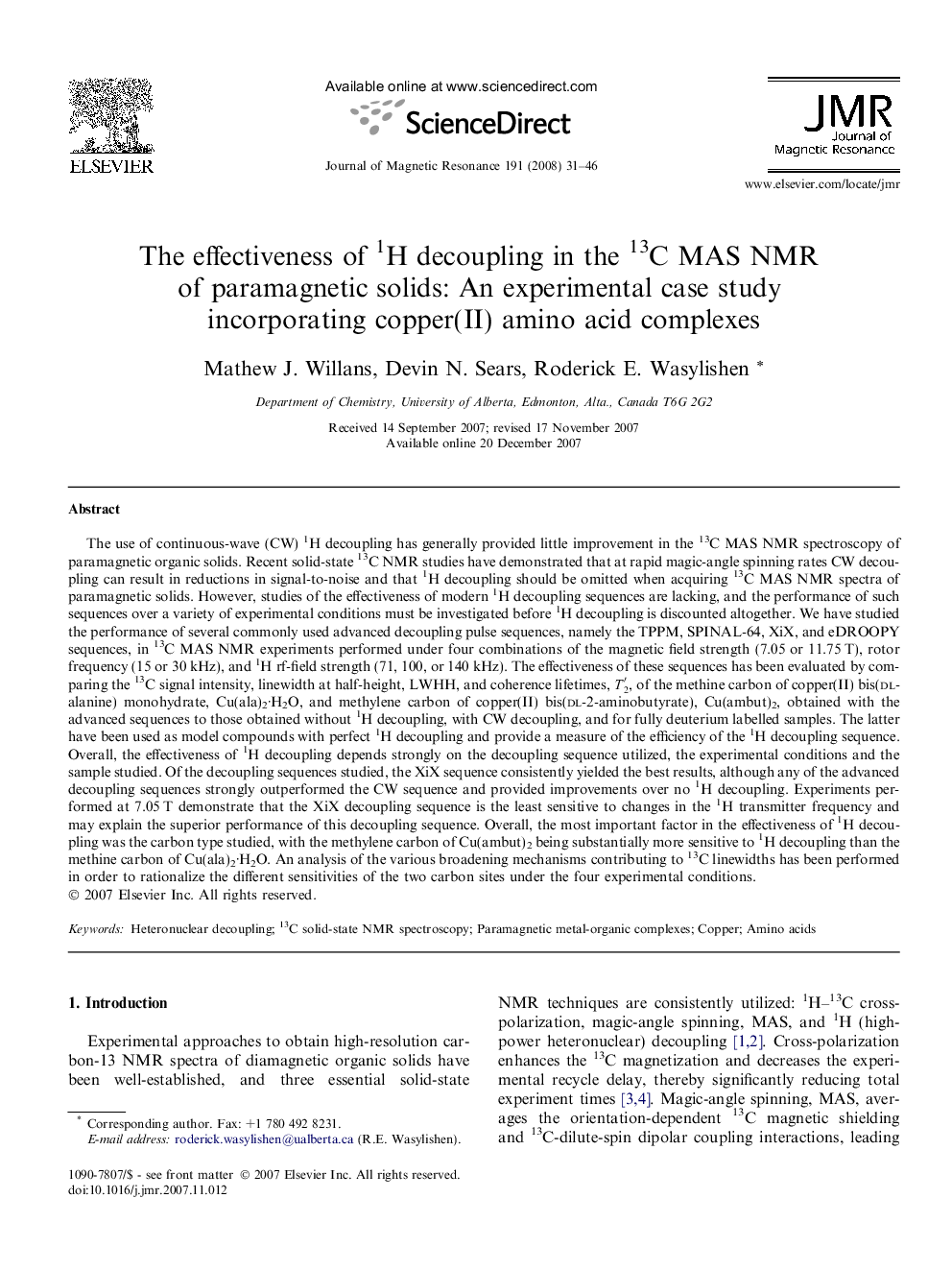| Article ID | Journal | Published Year | Pages | File Type |
|---|---|---|---|---|
| 5406998 | Journal of Magnetic Resonance | 2008 | 16 Pages |
Abstract
The use of continuous-wave (CW) 1H decoupling has generally provided little improvement in the 13C MAS NMR spectroscopy of paramagnetic organic solids. Recent solid-state 13C NMR studies have demonstrated that at rapid magic-angle spinning rates CW decoupling can result in reductions in signal-to-noise and that 1H decoupling should be omitted when acquiring 13C MAS NMR spectra of paramagnetic solids. However, studies of the effectiveness of modern 1H decoupling sequences are lacking, and the performance of such sequences over a variety of experimental conditions must be investigated before 1H decoupling is discounted altogether. We have studied the performance of several commonly used advanced decoupling pulse sequences, namely the TPPM, SPINAL-64, XiX, and eDROOPY sequences, in 13C MAS NMR experiments performed under four combinations of the magnetic field strength (7.05 or 11.75 T), rotor frequency (15 or 30 kHz), and 1H rf-field strength (71, 100, or 140 kHz). The effectiveness of these sequences has been evaluated by comparing the 13C signal intensity, linewidth at half-height, LWHH, and coherence lifetimes, T2â², of the methine carbon of copper(II) bis(dl-alanine) monohydrate, Cu(ala)2·H2O, and methylene carbon of copper(II) bis(dl-2-aminobutyrate), Cu(ambut)2, obtained with the advanced sequences to those obtained without 1H decoupling, with CW decoupling, and for fully deuterium labelled samples. The latter have been used as model compounds with perfect 1H decoupling and provide a measure of the efficiency of the 1H decoupling sequence. Overall, the effectiveness of 1H decoupling depends strongly on the decoupling sequence utilized, the experimental conditions and the sample studied. Of the decoupling sequences studied, the XiX sequence consistently yielded the best results, although any of the advanced decoupling sequences strongly outperformed the CW sequence and provided improvements over no 1H decoupling. Experiments performed at 7.05 T demonstrate that the XiX decoupling sequence is the least sensitive to changes in the 1H transmitter frequency and may explain the superior performance of this decoupling sequence. Overall, the most important factor in the effectiveness of 1H decoupling was the carbon type studied, with the methylene carbon of Cu(ambut)2 being substantially more sensitive to 1H decoupling than the methine carbon of Cu(ala)2·H2O. An analysis of the various broadening mechanisms contributing to 13C linewidths has been performed in order to rationalize the different sensitivities of the two carbon sites under the four experimental conditions.
Related Topics
Physical Sciences and Engineering
Chemistry
Physical and Theoretical Chemistry
Authors
Mathew J. Willans, Devin N. Sears, Roderick E. Wasylishen,
